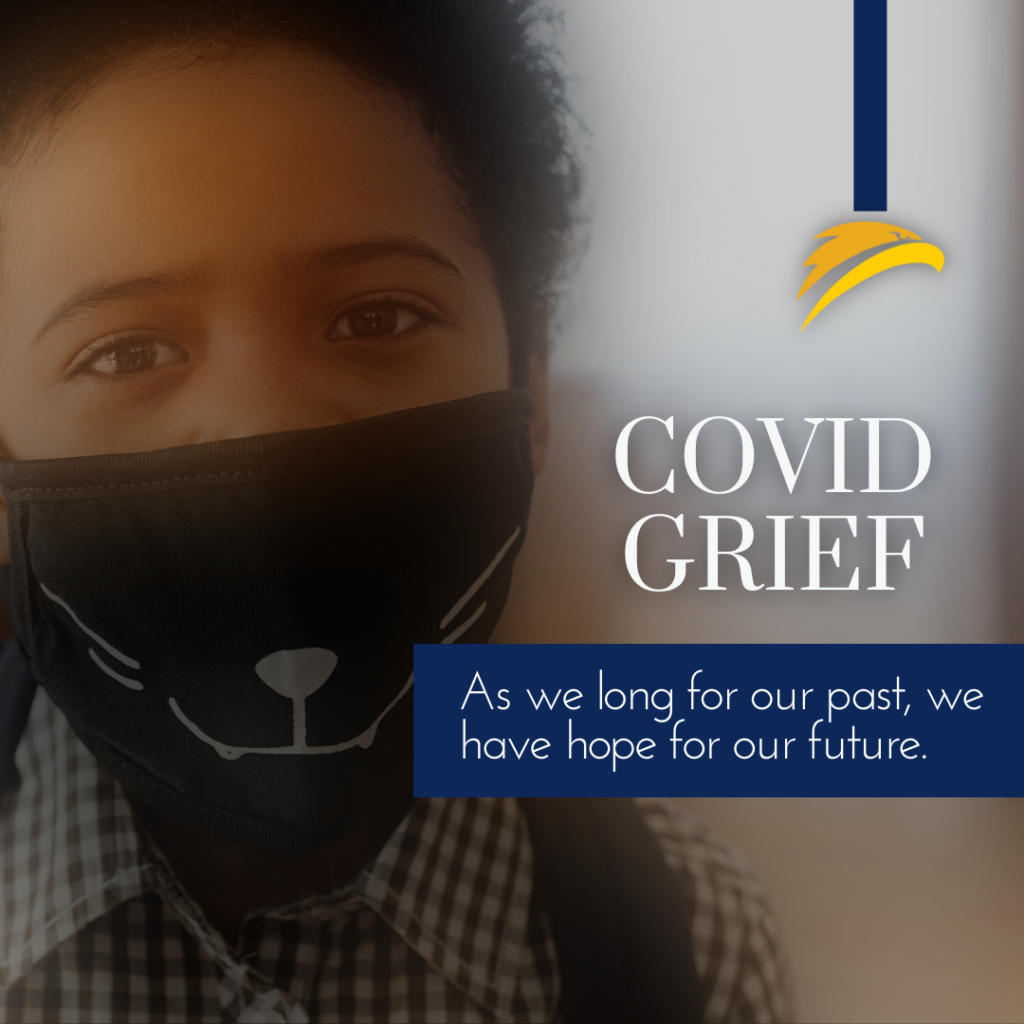
Grief. Many of us are familiar with the traditional sense of the word, but what we are learning is that COVID has left many of us with ambiguous grief; the feeling of loss over something that is still there. COVID has taken many things from each of us. Two years into the pandemic and we still long for the days when we could smile freely at a baby, a stranger, a neighbor, or a loved one. Two years into the pandemic and it still seems unreal. Many of us have grieved, adapted, and grieved again. Adjusting to the new normal has been a challenge, but the challenge has been met with perseverance. We’ve learned about ourselves as individuals, mothers, fathers, educators, and as intricate parts of our communities. At this point, most of us have adjusted to the new normal, but grief doesn’t just disappear as we regain our equilibrium. We must continue to focus on self-care and help our children to do the same.
How grief presents in children and adolescents
Similar to adults, grief is a very strong emotion that can reveal itself in complex ways. For children, grief can look like:
- Depression.
- A loss of interest in daily activities.
- Decrease or increase in sleep.
- Weight loss or gain.
- Regression.
- Withdrawal from friends.
- Drop in school performance.
- Physical illness (somatic symptoms).
For Adolescents, the tell signs of grief may vary. Adolescents who are experiencing grief may present with one or more of the symptoms listed below:
- Sadness that the loved one has gone – and as we are seeing – an overall sadness for what was.
- Difficulty concentrating or remembering things.
- Reluctance to go to school.
- Disruptive behaviors/frequent fighting.
- Non-compliance to requests.
- Hyperactivity.
- Increased need for attention.
- Issues of abandonment, insecurity, and safety concerns.
- Fear, guilt, relief, anger, rage, regret, confusion.
Causes for concern
All of the responses to grief listed are normal. It is when these symptoms become extreme that your child is in need of additional help. While there is nothing wrong with asking for help, there are plenty of preventative measures we can take to better help our children as they continue to adjust to the new normal.
What can we do to continue to support our children?
- Prioritize your own wellbeing: I know it sounds counterproductive, but happy healthy parents = happy healthy children.
- Check on them: It may seem simple and often met with resistance (#teens) but maintaining the possibility for open dialogue with your child/adolescent lets them know that you are there if they need you.
- Go on a walk together: From a biological standpoint, walking can reduce cortisol (stress hormone), depression, anxiety, brain fog, and enhance sleep quality. This will also give you the opportunity to have some one-on-one time with your child to further lines of communication.
- Sleep: Make sure your child is sleeping. Poor sleep is linked to emotional and mental health problems and can increase the risk of suicidality in adolescents. Sleep also influences the immune system, hormones, and muscle and tissue recovery. While it sometimes seems unrealistic, children and teens should be getting somewhere between 8-12 hours of sleep per day, varying by age.
- Healthy diet: I know, this has been said time and again and is near impossible to achieve every day, but if nothing else, talk with your physician about getting a good multivitamin, give one to your child and take one too!
What is Robinson doing to help support our community?
Robinson teachers and administration are on a constant lookout to see how we can better serve our students and parents. This is done through our continued support available to students in all aspects of student life. As we move forward into 2022, the Wellness Team strives to create programs that are not only student-centered but with interests chosen by the students themselves.
What’s next?
Our wellness blogs will be followed with an opportunity to further discuss the topic, provide feedback, and share ideas/interests for future blogs.
Click here to signup for our informational chat.
Stay Connected
Don’t stay in the dark. If you have questions, concerns, or just want to connect, please feel free to contact me at mjones@robinsonschool.net
If interested, below are some great resources on child and adolescent mental health:
By: Maegan Jones, Wellness Committee

